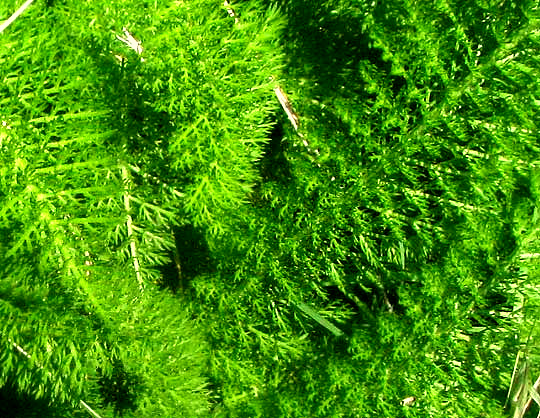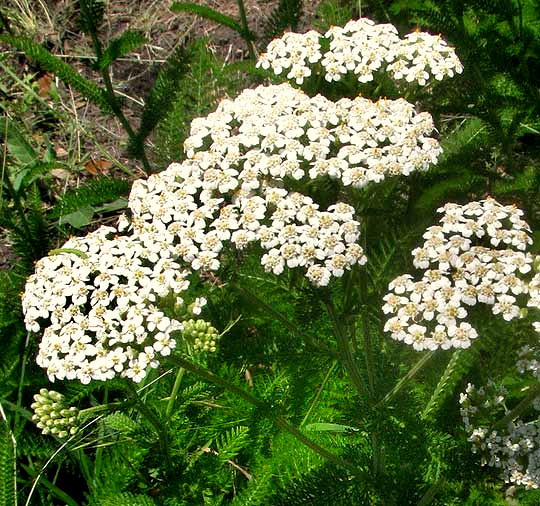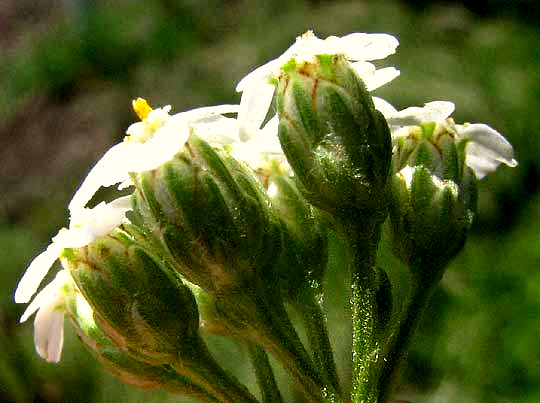Excerpts from Jim Conrad's
Naturalist Newsletter
from the May 19, 2013 Newsletter issued from the Frio Canyon Nature Education Center in northern Uvalde County, southwestern Texas, on the southern border of the Edwards Plateau; elevation ~1750m (~5750 ft); N29.62°, W99.86°; USA
YARROW
Behind the cabin this winter saucer-sized rosettes of ferny leaves kept their greenness and fuzziness all through our freezes, hails and long periods without rain. Not long ago leafy stems bolted up from the taproots beneath the rosettes, and this week, atop knee-high stems, pretty, flat-topped, corymb-type inflorescences appeared, as shown below in a scenic view of my backyard:

A close-up of the thrice pinnately compound, eminently soft, fuzzy and odoriferous leaves is shown below:

A corymb-type inflorescence is one that is short and broad, more or less flat-topped, and with no particular limitation on the number of flowers the corymb might eventually produce. In a corymb, outer flowers open before inner ones. Below you can see our plant's corymbs atop ferny-leafed stems:

A close-up of a corymb section is shown below:

Seeing how individual tiny flowers are held in tight clusters subtended by green, scaly, urn-shaped "involucres," we know we have a member of the enormous Daisy or Composite Family here. However, most of this Newsletter's readers won't need to "do the botany" to already know that here we're dealing with one of the most common, weedy, and best known of roadside plants, the Yarrow, ACHILLEA MILLEFOLIUM.
Having seen Yarrow in weedy places all across North America and Mexico, and remembering how it looked so at home in natural meadows at high elevations in the Alps, I've always assumed that Yarrow was a Eurasian invasive weed. However, the Flora of North America describes it as a very variable species native to practically the entire Northern Hemisphere's Temperate Zone. Its variability has resulted in at least 58 published technical binomial names just for North American plants, but the Flora treats all the variations as just the same "polymorphic" species. The Flora also says that European forms introduced several times into the Americas resulted in hybridization and the formation of various levels of polyploidy.
If you've smelled Yarrow's pungent leaves you can imagine that many medicinal uses have been proposed for the plant. One web page claims that Yarrow stops bleeding, makes tissues contract and helps them to heal, is antiseptic, is anti-inflammatory, and slightly anesthetic. It's used for coughs and to relieve muscle spasms. It's a traditional "women's herb," used to ease the pain of menstrual cramping. And Yarrow supposedly lowers blood pressure and slows one's heartbeat.
Yarrow can be collected for medicinal uses right now while it's flowering, or before the flowers appear. I'm collecting some to dry from the laundry shed's rafters, beside the Rabbit Tobacco and Horehound already there.